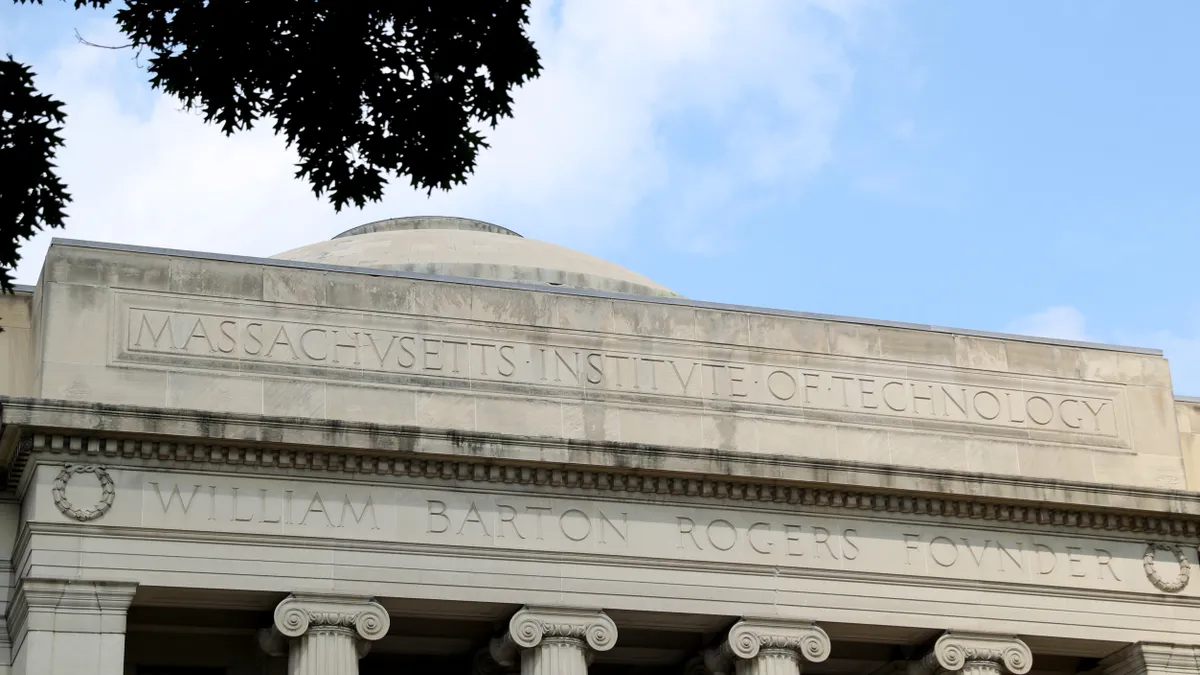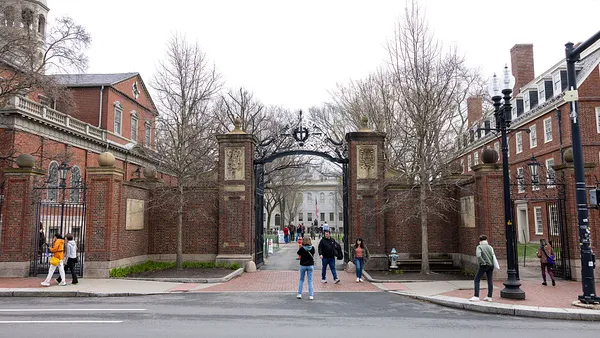Dive Brief:
- Cutting state funding to higher education increases tuition and lowers spending on instruction, research and community services, according to a new report from the Federal Reserve Bank of Boston. That compounds student loan debt and the current dearth of skilled workers.
- These negative consequences are "more pronounced" at community colleges, the report notes, as those institutions tend to serve more minority and low-income students.
- To shift the tide, the Boston Fed encourages "building larger budget stabilization funds" for public institutions during economic booms to spend from during downturns. To shore up higher ed funding, the report also recommends states either contain spending on Medicaid and public pensions or raise taxes, which it says will bring "social, economic and fiscal benefits" that will "justify the additional costs."
Dive Insight:
Cutting state funds to higher ed by $1 leads to a 17-cent increase in net tuition and fees and a 30-cent drop in instructional spending at public doctoral colleges in New England, the report notes. At community colleges in the region, the impact of a $1 cut is more severe, yielding a 56-cent decline in expenditures.
As a result, New England community colleges granted about 21,400 fewer associate degrees from 2002 to 2012 than they would have if appropriations had stayed at 2001 levels, the report estimates. Those institutions, in particular, should be protected from funding cuts, the report contends, as they play "a more prominent role in providing two-year postsecondary education in New England than they do in the United States," enrolling 99% of the region's students at two-year institutions in 2014 compared to 95% nationwide.
The cuts had an impact on the region's six public doctoral institutions, too. The report found their research output dropped, estimating that they had up to 369 fewer approved patent applications during the period.
Reliance on public funding varies across New England. In New Hampshire and Vermont, for instance, state appropriations comprise a much smaller share of total revenues than they do elsewhere in the region or the country.
Per-student public spending dropped in all New England states from 2008 to 2018 when adjusted for inflation, with New Hampshire (29.7%), Connecticut (20.2%) and Vermont (15.8%) experiencing the biggest cuts, which were at or above the national average of 16%. Rhode Island (12.6%) and Massachusetts (12.1%) came in under the average, and Maine (2.4%) reported one of the smallest decreases among states.
With several large state university systems, a bevy of small liberal arts colleges (including some of the most elite in the country) and the presence of emerging online alternatives like Southern New Hampshire University, New England is a microcosm of how tightening state budgets, shifting student demographics and the emergence of new educational delivery models are straining traditional institutions.
Several small private colleges in the region have recently closed or consolidated as tuition revenues declined. That has caused at least one state to increase its oversight of those schools. Meanwhile, Connecticut's community college system hopes to consolidate from 12 individual schools to a single institution with three regional hubs. The University of Rhode Island, on the other hand, wants to expand with three "innovation" campuses to strengthen its ties to the local economy.













